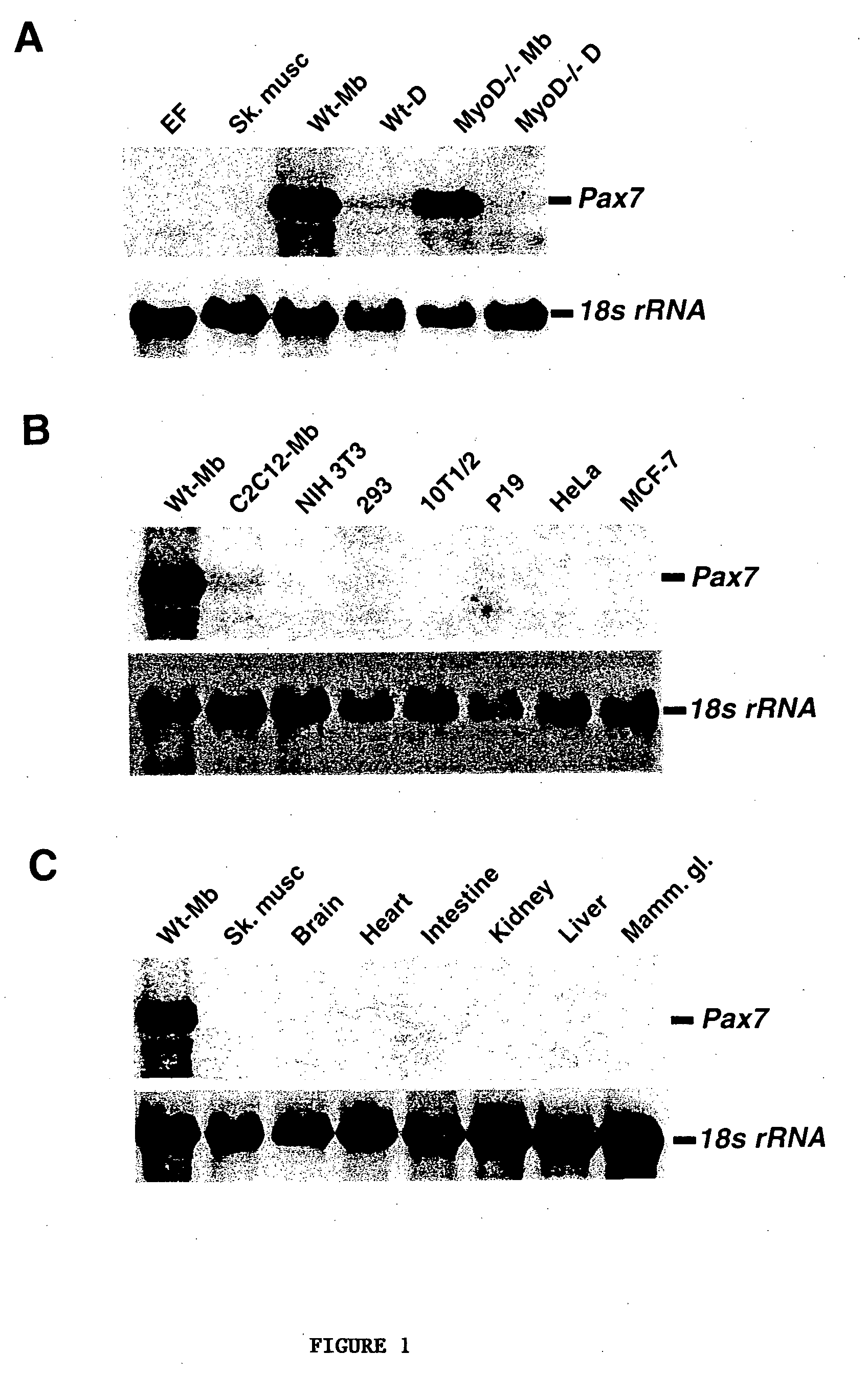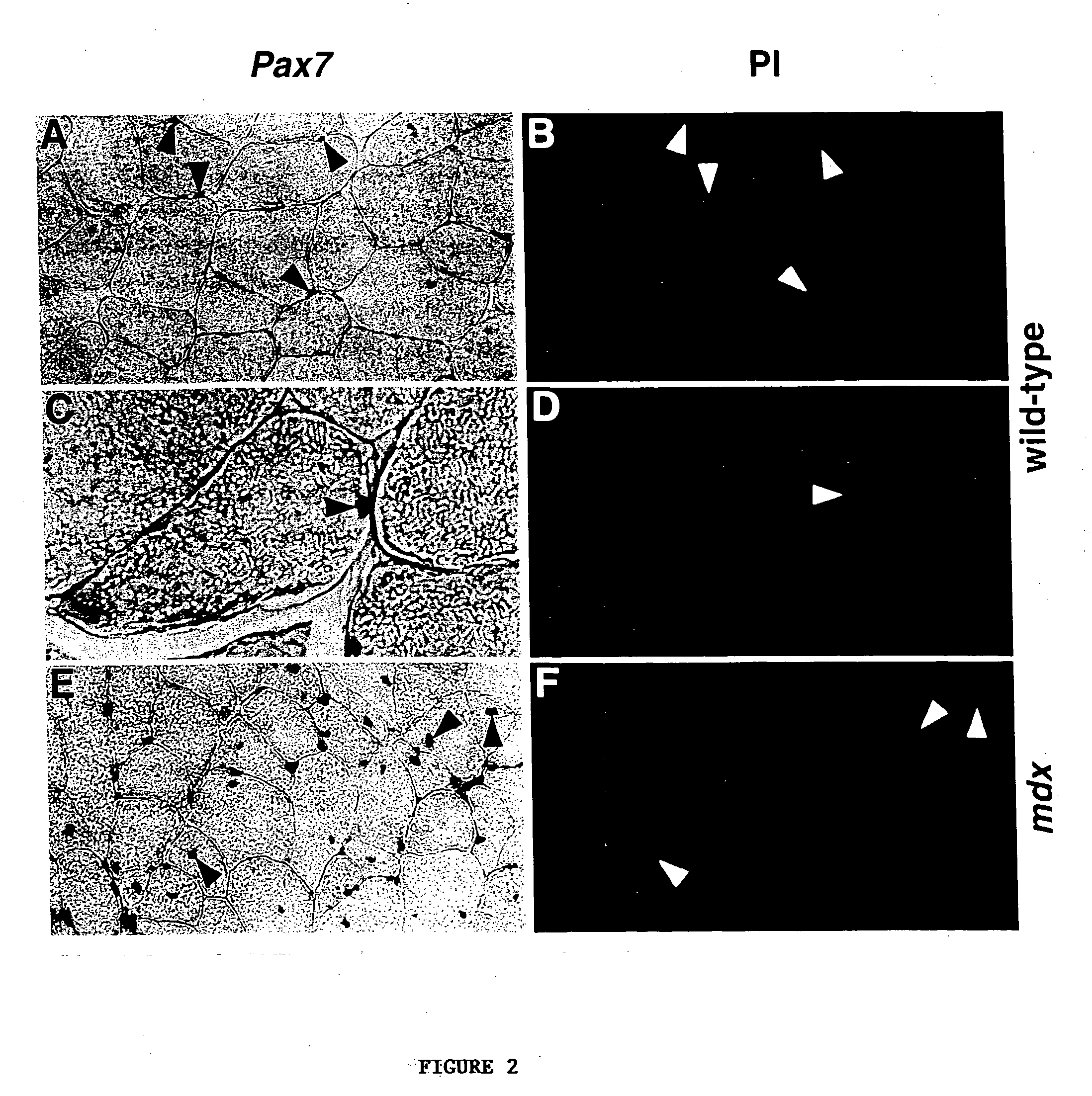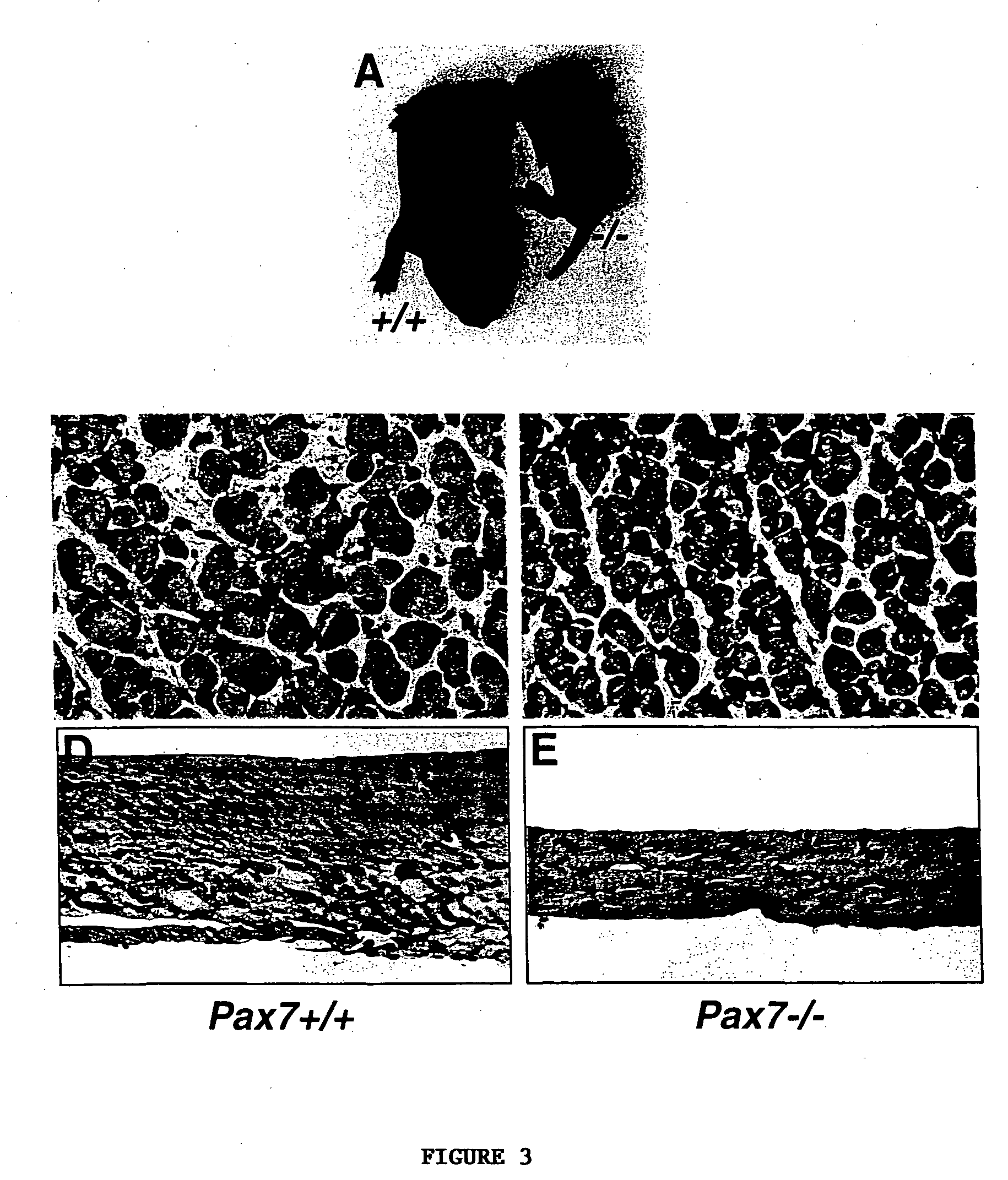Pax-encoding vector and use thereof
a vector and vector technology, applied in the field of vectors, can solve the problem of increasing the number of muscle cells at the location of myoblast infusion, and achieve the effect of improving the number of muscle cells
- Summary
- Abstract
- Description
- Claims
- Application Information
AI Technical Summary
Benefits of technology
Problems solved by technology
Method used
Image
Examples
examples
[0218] Molecular Cloning of Pax7 and Expression Analysis
[0219] RDA was performed as described by Hubank and Schatz, 1994. Satellite cell derived myoblast cDNA was subtracted twice against mouse embryonic fibroblast (MEF) cDNA (1:100; 1:400) and once against skeletal muscle cDNA (1:400) to generate the final difference products. The full-length mouse cDNA for Pax7 was isolated by screening an adult mouse skeletal muscle library (Clontech) using the RDA clone as a probe (Maniatis et al., 1982).
[0220] Total RNA was extracted as previously described (Chomczynski and Sacchi, 1987). Northern Analysis of 20 μg of total RNA from tissue or cell cultures was performed as per Maniatis et al., 1982. In situ hybridisation for Pax7 mRNA was performed as described elsewhere (Braissant and Wahli, 1998). Sections were counter-stained with 100 μg / mL Propidium Iodide (Sigma) in PBS for 10 minutes at room temperature. Three different Pax7 sequences from the full-length cDNA were used as cRNA probes: ...
example i
Identification of Genes Expressed in Satellite Cell Derived Myoblasts
[0229] Muscle satellite cells represent a distinct lineage of myogenic progenitors responsible for the postnatal growth, repair and maintenance of skeletal muscle (reviewed by Seale and Rudnicki, 2000). At birth, satellite cells account for about 30% of sublaminar muscle nuclei in mice followed by a decrease to less than 5% in a 2 month old adult (Bischoff, 1994). This decline in satellite cell nuclei reflects the fusion of satellite cells during the postnatal growth of skeletal muscle (Gibson and Schultz, 1983). Satellite cells were originally defined on the basis of their unique position in mature skeletal muscle and are closely juxtaposed to the surface of myofibers such that the basal lamina surrounding the satellite cell and its associated myofiber is continuous (Bischoff, 1994).
[0230] In mice over 2 months of age, satellite cells in resting skeletal muscle are mitotically quiescent and are activated in resp...
example ii
Pax7 is Specifically Expressed in Proliferating Myoblasts
[0235] Detailed expression analysis of the distribution of Pax7 MRNA was conducted by Northern analysis (FIG. 1). These analyses demonstrated that Pax7 was expressed exclusively in proliferating primary myoblasts, with comparable levels of expression in both wild-type and MyoD− / −cultures (FIG. 1A). However, Pax7 mRNA was down regulated following myogenic differentiation (FIG. 1A). Furthermore, Pax7 was not expressed at detectable levels in a variety of non-muscle cell lines (FIG. 1B). Rather, Pax7 was strictly expressed in myogenic cells including low levels in proliferating C2C12 mouse myoblasts, which are a continuous cell line originally derived from satellite cells (FIG. 1B). In addition, Pax7 mRNA was not detectable in 20 μg of total RNA from several adult mouse tissue samples (FIG. 1C). Analysis of polyA+ RNA from select mouse tissues revealed expression of Pax7 at low levels only in adult skeletal muscle (not shown). T...
PUM
| Property | Measurement | Unit |
|---|---|---|
| Electrical resistance | aaaaa | aaaaa |
Abstract
Description
Claims
Application Information
 Login to View More
Login to View More - R&D
- Intellectual Property
- Life Sciences
- Materials
- Tech Scout
- Unparalleled Data Quality
- Higher Quality Content
- 60% Fewer Hallucinations
Browse by: Latest US Patents, China's latest patents, Technical Efficacy Thesaurus, Application Domain, Technology Topic, Popular Technical Reports.
© 2025 PatSnap. All rights reserved.Legal|Privacy policy|Modern Slavery Act Transparency Statement|Sitemap|About US| Contact US: help@patsnap.com



